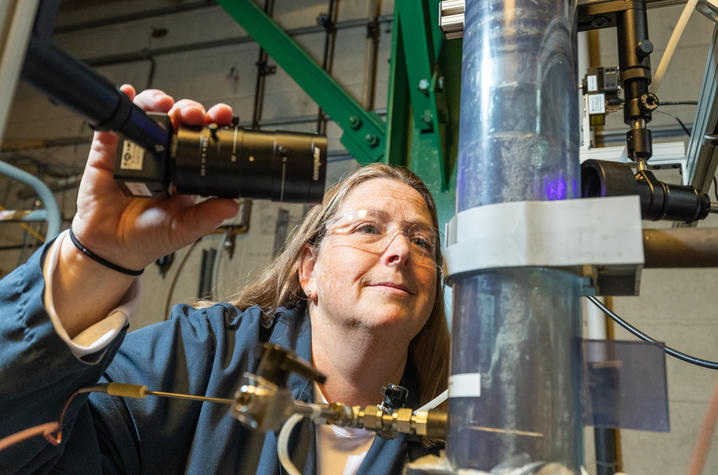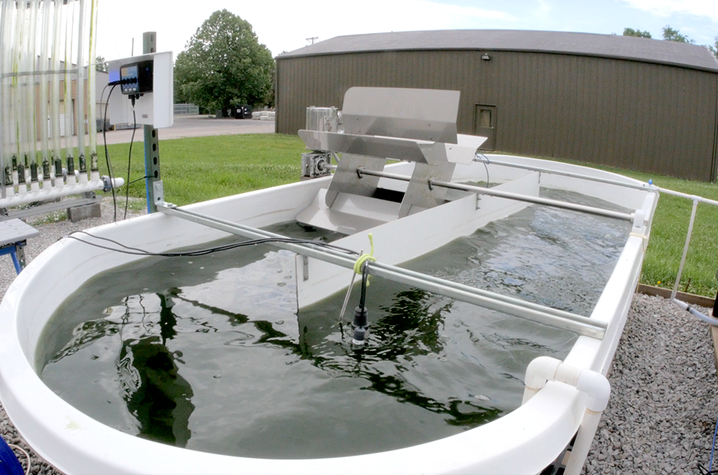CAER Receives U.S. DOE Grant to Develop Next-Generation Carbon Dioxide Capture Technology
LEXINGTON, Ky. (Oct. 2, 2020) — For more than a decade, two groups at the University of Kentucky Center for Applied Energy Research (CAER) have focused their time and talent investigating and creating new technologies for different methods for capturing carbon dioxide (CO2) from coal-fired power plants and industrial facilities.
The center’s Power Generation Group, led by Kunlei Liu, has developed a breakthrough post-combustion CO2 capture technology using advanced engineering and a novel solvent. A second group, CAER’s Biofuels and Environmental Catalysis research team, led by Mark Crocker, has used biology to help capture CO2. Specifically, they have developed new technologies using algae to capture the carbon dioxide.
Thanks to a new grant from the U.S. Department of Energy’s (DOE) National Energy Technology Laboratory, these two groups are joining forces on an innovative new project that will leverage each group’s expertise. The project is titled “Ammonium Looping with Membrane Absorber and Distributed Stripper for Enhanced Algae Growth.” The $3.7 million project includes DOE funding and industry and university cost-share.
CAER researchers will be developing an NH3-based looping integrated CO2 capture and utilization technology that will reduce capture capital and operating costs by 50%. In traditional CO2 capture systems, the flue gas from the power plant is pretreated for cooling/SO2 removal, extracted steam is required for solvent regeneration, and the CO2 must be compressed for downstream utilization or sequestration. The CAER-proposed system will eliminate those steps.
“This new CO2 capture and utilization system design marries use of a non-degradable capture solvent with continuous, steady feed of nutrients to the algae,” said Heather Nikolic, research program manager at CAER. “This technology could generate the type of cost savings and production increase needed to make both CO2 capture and algae utilization more economical and accessible.”
This technology will also boost algae production by 50% by continuously supplying CO2 and NH3 in the appropriate growth ratio, compared to an intermittent feeding system.
“We are excited to work with and learn from our CAER colleagues on this project,” said Crocker, associate director at CAER and professor in UK’s Department of Chemistry. “By installing these solvent generators near the algae bioreactor we will provide local, just-in-time distribution of CO2 and NH3 at the appropriate ratio, boosting algae production. We believe this engineering advancement will have a significant impact on algae production.”
Researchers from Colorado State University, Vanderbilt University and Trimeric Corporation will partner with CAER on this project.
“Successful development of this technology will allow for more environmentally friendly use of fossil fuels for reliable electricity production,” said Liu, associate director at CAER and associate professor in the UK College of Engineering. “This project will allow us to significantly reduce the complexity and cost of CO2 capture and biofixation from all sources, whether it is from utility companies, cement manufacturing, or chemical plants. But we also hope it shows the public that carbon capture and utilization technology can be affordable and sustainable.”
As the state’s flagship, land-grant institution, the University of Kentucky exists to advance the Commonwealth. We do that by preparing the next generation of leaders — placing students at the heart of everything we do — and transforming the lives of Kentuckians through education, research and creative work, service and health care. We pride ourselves on being a catalyst for breakthroughs and a force for healing, a place where ingenuity unfolds. It's all made possible by our people — visionaries, disruptors and pioneers — who make up 200 academic programs, a $476.5 million research and development enterprise and a world-class medical center, all on one campus.






